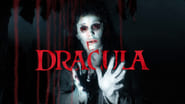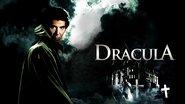Cineanalyst
If dime romance novels are your thing and not gothic horror, then this is the "Dracula" for you. The moment Frank Langella's suave vamp, with the top few buttons of his shirt detached, picks up Lucy before tossing her on the bed seems to be ripped right from the covers of such bathtub-companion paperbacks. Otherwise, this 1979 "Dracula" is at best instructive in how not to adapt Bram Stoker's novel.From the beginning, it excludes one of the best parts of the story: Jonathan Harker's visit to Transylvania. Instead, it begins with a chaotic and distracting crisscross between scenes of seamen being killed by Dracula in the form of a wolf and of the inmates running amok in Dr. Seward's madhouse. There's 16-plus minutes of overly-dramatic buildup to the reveal of Langella's boyishly-handsome and sociable Count. There's an overblown score. The hairstyles, perms and shags included, are exported from 1979 to the film's setting that is presumably in the 1910s or 1920s judging by artifacts such as the early automobile, phonograph and primitive blood transfusions, etc. The bat attacks are unintentionally funny. And there's a love triangle and a love scene, for crying out loud!The same original play that almost ruined the 1931 "Dracula" films (English and Spanish-language versions) by bogging them down in staginess is reused here instead of the contemporary theatrical revival also starring Langella. Allegedly, the revival was played for camp; the filmed version would've been wise to do likewise if they were going to adapt trash, as they did, but, unfortunately, little to no camp. Among other inexplicable changes, the Mina and Lucy characters switch names, and they're made the offspring of Van Helsing and Seward, respectively. Both ladies are reduced to damsels-in-distress, and Lucy is even seduced into being a traitor and spy for Dracula. Apparently, the filmmakers believe turning the novel's strongest and female hero into a weak, sexual plaything is supposed to be good romance.Things pick up a bit when the strong father figure arrives in the form of Van Helsing--a day after his daughter's funeral... apparently, they couldn't wait. In some far-too-Freudian scenes, he begins by inserting his wood stake into his own daughter, only to later be penetrated himself. There's also a scene of the confrontation of wills between Dracula and Van Helsing that was in the 1931 versions. See, according to these films, the man has a strong will, which the fairer sex lack. Nothing this egregiously sexist was in Stoker's book.This adaptation is horribly inconsistent, too. Van Helsing meets Dracula during the day when the sky is overcast, but he's later surprised to see the Count awake in his Carfax Abbey estate during the day. Mina casts a reflection in a puddle, but not in a mirror. As a vampire, she looks more like a zombie, while Drac is a stud. The filmmakers seem to have adopted vampire lore from various sources and not just Stoker. The death by sunlight may've originated from the 1922 film "Nosferatu," for instance. In any case, it's not from Stoker. I also don't know why Van Helsing goes back the day after driving a stake in his daughter's heart to, then, remove her heart entirely. Dr. Seward is a buffoon who performs blood transfusions and misruns an asylum, and Renfield is an utterly useless character this outing. On the plus side, Harker sports a bite mark from Dracula's bat on his face. And the love scene includes Dracula feeding his breast blood to Lucy, which I guess was sexy enough to adapt here from the novel. Otherwise, this is the kind of Dracula film, as was the 1979 "Nosferatu," for that matter, that's ripe for parody, which, as luck and "Love at First Bite" would have it, was also made in 1979.(Mirror Note: In addition to the aforementioned inconsistencies with Mina's reflections, there's the discovery by Van Helsing that Dracula doesn't cast a reflection in a mirror--a scene similar to the 1931 films, but staged a bit different. There's also a mirror shot where Lucy brushes her hair and removes her crucifix necklace, which allows for her love scene with Drac.)
calvinnme
This 1979 version of the Bram Stoker tale takes it's cue from the then-recent hit Broadway revival of the old Hamilton Deane & John Balderston play than from the original source.The familiar tale has been reconfigured, with some characters changing drastically while others are dropped all together. Lucy is now the central female role, played ably by a fetching Kate Nelligan. Instead of being one of her suitors, Dr. Seward (Donald Pleasence) is now her father. The Mina character takes the secondary role held by Lucy in the book, and in this version, she's the daughter of Dr. Van Helsing. That iconic role is played by Laurence Olivier, looking very old and frail. Jonathan Harker, fiancée of Lucy and real estate agent to Dracula, is a bland Trevor Eve. The crazed Renfield acts as little more than an inept butler to Dracula, and is played by Tony Haygarth, who the previous year had played an especially detestable Nazi in the TV miniseries "Holocaust".The center of the film is Frank Langella as the title count. His performance made him a true superstar of the stage, and it translates fairly well to the big screen. His full lips, big dark eyes and thick head of blown dry hair make him the most overtly sexual of all the screen Draculas.The production is nice to look at for the most part, but some scenes are a little too under lit. The sweeping John Williams score is suitably evocative. One romantic sequence using backprojected laserlight has the unfortunate effect of casting a disco vibe about the whole thing, suitable since directing duties went to Saturday Night Fever's John Badham. Olivier's performance is all over the place, at turns leaden, then scenery-chewing, with a wandering accent to boot. His health was a serious issue at this time, so some understanding is in order. One shouldn't expect much in the way of scares or gore, with a few minor exceptions. The novel's unsavory subtexts regarding fear of immigrants and female sexuality are thankfully absent. All in all, suitable viewing on lonely nights for those with a darker taste in romance.
Rainey Dawn
I don't understand why the ratings on this version of the story of Dracula is so low. It is one of the most beautiful Dracula films on the market. Not quite true to Bram Stoker's book, but then again none of the Dracula films are. This particular version is so romantic, thrilling and exotic in it's way. Lovely Gothic imagery, well acted, awesome casting and a good script/story. Why are the ratings so low? I'll never know.Maybe it's just me but I find this one of the best Dracula films I've ever seen. Hypnotizing from start to finish. Suspenseful - even if you know the story of Dracula you can still find suspense in this film.I don't feel I have to give a brief over view of what the story is about because I think almost all of us know the basic story already - so no need to rehash it for this review.Highly recommended for viewing to Vampire/Dracula lovers.10/10
gavin6942
Romanticized adaptation of Bram Stoker's 1897 classic. Set in 1913 England, the bloodsucking, but handsome, charming and seductive, Count Dracula seeks an immortal bride.This film is somewhat notorious because the color is "drained" or faded. Apparently the theatrical version is vibrant and later releases (DVD, Laserdisc, etc) have the color almost completely removed. Indeed, the Universal / Image DVD is very pale. Some say it almost looks black and white. Stylistically, it is not a great choice.That being said, the story is interesting. Frank Langella plays an interesting Dracula, much more charming than the most notable earlier versions (Bela Lugosi or Max Schreck). A wise decision, and one that really speaks to the romantic undertones many read in the novel.











